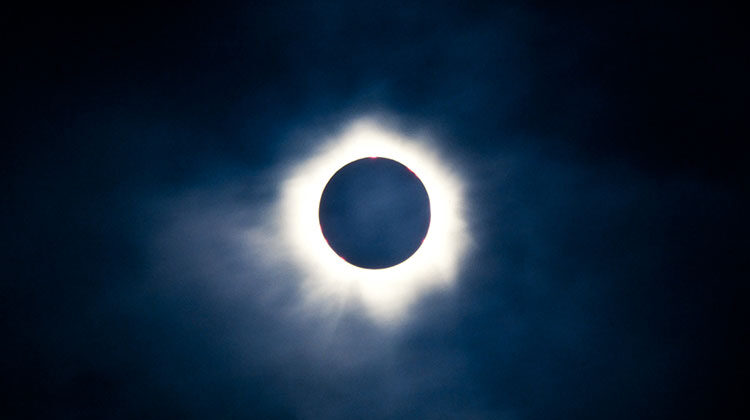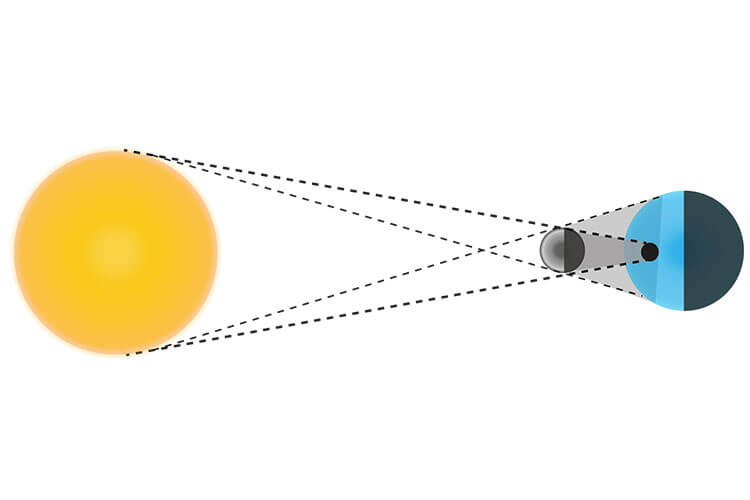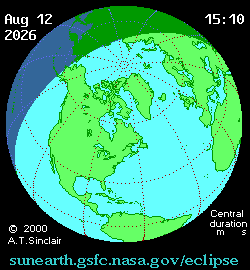
12th August 2026 is set to be an unforgettable day for astronomy lovers, especially those lucky enough to be in the Iberian Peninsula. After more than 120 years, Spain will once again witness one of nature’s most awe-inspiring spectacles: a total solar eclipse.
Quick facts:
- 📅 When: 12 August 2026
- 📍 Where: Northern Spain (total eclipse) – the rest of the country (partial eclipse)
- 🕶️ How to watch: With certified eclipse glasses or at organised viewing events
- 💫 Why it’s special: It’s the first total solar eclipse visible from Spain in over a century
What is a total solar eclipse?
A total solar eclipse happens when the Moon aligns perfectly between the Earth and the Sun, completely blocking sunlight for a few magical minutes. During this brief moment, day turns into night, stars may become visible, and the temperature drops noticeably. It’s a truly breathtaking phenomenon that has fascinated humanity for centuries.

Why is the 2026 eclipse so special?
This eclipse will be fully visible across northern Spain, passing through regions such as Galicia, Castilla y León, Navarra and the Basque Country, and ending as the sun sets over the Balearic Islands. In these areas, lucky observers will enjoy up to two minutes of totality.

Even if you’re not in the path of totality, most of Spain will still experience a partial eclipse—meaning nearly the entire country will take part in this extraordinary celestial event.
Globally, the 2026 eclipse will also be visible in its total phase from parts of Greenland, the western edge of Iceland, and northern Siberia.
Best places in Spain to view the total eclipse
Choosing the right location is essential for getting the best experience. Look for areas with clear skies, high elevation, and low light pollution.
Some Spanish provincial capitals that lie within the path of totality include: Bilbao, Burgos, Castellón, A Coruña, Cuenca, Guadalajara, León, Lleida, Logroño, Lugo, Oviedo, Palencia, Palma de Mallorca, Santander, Segovia, Soria, Tarragona, Teruel, Valencia, Valladolid, Vitoria, and Zaragoza.
How to watch it safely
Watching a solar eclipse is an incredible experience, but safety comes first:

- Never look directly at the Sun without proper protection, even during a partial eclipse.
- Use special eclipse glasses that meet ISO 12312-2 standards.
- You can also use pinhole projectors or solar filters for telescopes and cameras.
- During the total phase, when the Sun is fully covered, it is safe to look directly with the naked eye, but only during that moment!
What’s next after 2026?
While the 2026 eclipse is the big one for Spain, here are a few other upcoming events to note:
- 2 August 2027: Another total eclipse, but not fully visible from mainland Spain.
- 26 January 2028: An annular eclipse visible at sunset in some regions, especially in the Balearic Islands.
- The next total eclipse visible from Spain after 2026 won’t occur until 2059.
Witness the 2026 Solar Eclipse from Mallorca
An event this rare deserves to be enjoyed from somewhere truly special and Mallorca ticks all the boxes:
- Clear skies
- Peaceful rural areas with open landscapes
- Stunning natural beauty
At Sealand Villas, you’ll find holiday homes that offer the perfect combination of comfort, calm and incredible views, ideal for watching the eclipse in style.
Make the most of this once-in-a-lifetime opportunity and turn the 2026 eclipse into an unforgettable escape, surrounded by beauty, stillness, and a sky full of stars.



Leave a Reply